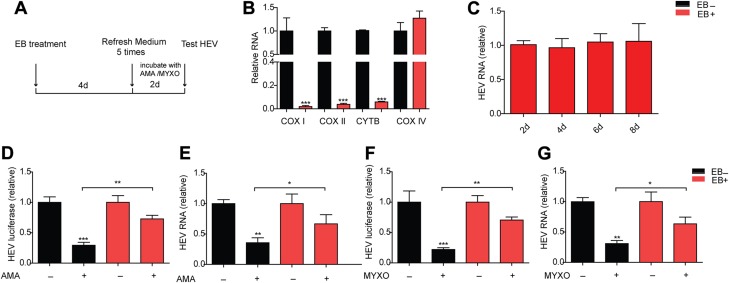Figure 2.
ETC deficiency reverses the anti-HEV effects of complex III inhibitors. A) U87-p6 infectious cells were treated with EB to establish an ETC-deficient cell model and were maintained in a medium supplemented with uridine and pyruvate to complement the metabolic deficiency connected with the defective ETC. B) mRNA levels of COX I, II, and IV and CYTB in the EB-treated or untreated group were measured by real-time qPCR. Data are means ± sd of 4 independent experiments, normalized to GAPDH. *P < 0.05, **P < 0.01, ***P < 0.001 vs. EB-untreated group. C) U87-p6 infectious cells were treated with EB for the indicated time before measurement of HEV RNA. D, E) EB-treated and -untreated groups were incubated with 0.1 μM AMA for 2 d before measurement of HEV luciferase activity (D) and HEV RNA (E). F, G) The EB-treated or -untreated group was incubated with 0.1 μM MYXO for 2 d before measurement of HEV luciferase activity (F) and HEV RNA (G). Data in the EB-treated group are presented relative to EB-treated CTR (set as 1). The data are means ± sd of 4 independent experiments, normalized to GAPDH. *P < 0.05, **P < 0.01, ***P < 0.001 vs. EB-untreated CTR (set as 1).

